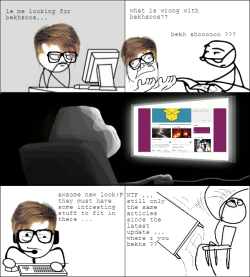Strategies for EDAHO
1,554 views Another May 17, another IDAHO. Five years now I have been celebrating the International Day Against Homophobia in Beirut. My memory of each passing event is become less and less distinct – with the exception of my first event in 2006. In 2007, I remember we went to Masrah Al Madina for some panels on LGBT and culture. I remember Pierre Abi Saab and Marcy Newman on one of those panels. What else? I remember a movie in which my friend, Bassam, told us about his coming out to his mother. It was really funny. I remember the theater had well over 200 people attending. Fast forward to 2008, I remember IDAHO in Art Lounge vaguely. Of course, who could forget the huge rainbow flag dangling down the building in Carantina? But what happened inside, I can’t remember. I think there were a couple of movies including Beirut Apartment. And there was a panel that discussed something related to LGBTs and the medical field. Well over 150 people attended. In 2009, IDAHO was held over 2 days. I wasn’t interested in the first, but I did go to the second day where Nizar Saghieh spoke on a panel with someone else about LGBTs and legal issue. It was a fantastic presentation from him. We were about 30 people in the audience. And this year, I headed to an IDAHO that was held under the theme “Ana Shazz” (tr. I am Deviant) to attend (yep, you guessed it) a panel.
Another May 17, another IDAHO. Five years now I have been celebrating the International Day Against Homophobia in Beirut. My memory of each passing event is become less and less distinct – with the exception of my first event in 2006. In 2007, I remember we went to Masrah Al Madina for some panels on LGBT and culture. I remember Pierre Abi Saab and Marcy Newman on one of those panels. What else? I remember a movie in which my friend, Bassam, told us about his coming out to his mother. It was really funny. I remember the theater had well over 200 people attending. Fast forward to 2008, I remember IDAHO in Art Lounge vaguely. Of course, who could forget the huge rainbow flag dangling down the building in Carantina? But what happened inside, I can’t remember. I think there were a couple of movies including Beirut Apartment. And there was a panel that discussed something related to LGBTs and the medical field. Well over 150 people attended. In 2009, IDAHO was held over 2 days. I wasn’t interested in the first, but I did go to the second day where Nizar Saghieh spoke on a panel with someone else about LGBTs and legal issue. It was a fantastic presentation from him. We were about 30 people in the audience. And this year, I headed to an IDAHO that was held under the theme “Ana Shazz” (tr. I am Deviant) to attend (yep, you guessed it) a panel.
The event raised many questions in my head – and in the heads of many in the audience who posed things like: “Where do we go from here?” “What now?” “What have we really achieved in the past decade?” Examining the faces of the 80-something people in the audience, I recognized many as either activists or familiar faces from the LGBT community. And I see we have fallen yet again into the same cycle of preaching to the converted.
And yet, I believe that IDAHO is not a reflection of the queer movement in Lebanon at all and while I understand the feeling that our biggest annual gay event should in a way punctuate, summarize, or demonstrate how our movement has progressed in the past year, it is clearly failing to do so. Perhaps we should stop expecting it to. I did, however, promise to write up some suggested strategies of how to push our queer movement forward, so here are as many as I can think of over the next 10 minutes:
- The queer movement in Lebanon has grown remarkably in the past 5 years with tens of initiatives sprouting across the country. We, the more established activists, should wholeheartedly endorse and support such initiatives, especially those that are outside of Helem or Meem. Often times organizations or structured groups limit potentials of people rather than empower them. We should also respect all initiatives as having equal ownership of the movement. A group of young gay men have started a discussion group in Beirut. A group of LGBTs in the South are meeting on a monthly basis. LGBT students in a university in Keserwan are working on a film project. Our movement can only grow if we not only allow it to sprout but encourage it to sprout.
- Our movement needs a regeneration of leadership. With all due respect to the activists on the panel yesterday, but I have heard the opinions of Nadine Moawad, Rasha Moumneh, and Ghassan Makarem many times now. How about a panel that hosted a new wave of activists, for example? Even if what they have to say is not informed with many years of experience, it would be guaranteed to offer fresh new perspectives.
- Perhaps the activists need an event that is solely dedicated to discussing the movement. Often we find ourselves in activities or retreats to discuss our organizations or committees. While that is important, it is microscopic. Let us instead organize a day where activists from different groups and of different strategies meet to discuss how we see the movement going. That way we can map out our strengths, stakeholders, alliances, developments, successes, failures, etc.. and move forward strategically. Indeed the smartest strategies are the ones we discuss confidentially.
- At the risk of sounding like a broken record, our biggest strength is in our numbers. How are we harnessing that power? Why are the numbers of attendees at IDAHO decreasing every year? Often we think that people’s inhibitions prevent them from coming out to public LGBT events. I think that is false reasoning. It is the events themselves that need to be tailored to our community, and by that I don’t mean that we should be organizing parties or social gatherings. How many of our community really understand what it means to be queer? Or have overcome all the fears of stating: “Eh, ana shaz.” Not many. And we cannot move forward without our community. We really can’t, in my opinion. Even if that means slowing down, or getting less media coverage, or taking the time to invest in a larger range of people rather than expect them to follow the few who are out and vocal and dressed up in rainbows.
- Someone in the audience yesterday said we must do more research. Of course. We must write more, publish more, and then write more. The reason we started Bekhsoos is to encourage everyone to write more. I, for one, believe there is nothing more powerful than storytelling.
- Scratch IDAHO. How about instead we celebrate September 29 when back in 1999 someone registered GayLebanon.com? Maybe that will help us think more creatively & more locally about an annual event. Better yet, let us replace IDAHO with what my good friend named EDAHO (Every Day Against Homophobia).
And most importantly, let us continue to debate the strategies.


 (7 votes, average: 4.43 out of 5)
(7 votes, average: 4.43 out of 5)


Leave a Reply